BETTER LIVING
The Future of Aging in Place … Is Moving?
Creative new housing options are emerging that allow older residents to stay in their community, but in a place better suited to their needs than their long-held home

AGING IN PLACE has become big business, as contractors and handymen install grab bars, build walk-in showers, widen doorways, upgrade kitchens and add first-floor bedrooms. Suddenly, even adding elevators to your house is a thing. But is redoing big homes the only path to happily aging in place?
The classic single-family home in the suburbs, after all, was mostly designed with growing families in mind, both in terms of the structures themselves as well as the sometimes isolating large lots and car-centric neighborhoods. And in a 2021 AARP survey, more than three-quarters of adults 50 and older said they wanted to stay in their homes or their communities as they age. For many of us, it turns out, aging in place isn’t so much about the home as the community—both the people and places.
So, more and more older Americans are remaining in their community, but “downsizing their way to happiness,” says Will Johnston, executive director of the MicroLife Institute, a nonprofit that built a neighborhood of eight 500-square-foot cottages on a half-acre lot near downtown Clarkston, Georgia, 11 miles northeast of Atlanta. (AARP Georgia is a sponsor of MicroLife.) “They’re reducing their footprint, especially all the boomers who were living in the extra-large 3,500-to-5,000-square-foot homes.”
And they are being offered increasingly attractive options—smaller, modular and more. Here are some of the housing choices available to older Americans.

Rendering of a modern duplex built into an older neighborhood
A modular home in an existing neighborhood
HOW DO YOU get a new house in an old neighborhood? A new initiative in Pittsburgh may show us the answer. On two empty lots, a group called the Housing Innovation Alliance and its partners are developing two factory-built concept homes aimed especially at older people who want to remain in Pittsburgh, but in a modern house that better suits their needs. “You want to stay in your neighborhood because your friends are there, and that connectivity can keep you young and safe,” says Dennis Steigerwalt, president of the alliance, which includes 800 builders responsible for 40 percent of U.S. housing starts.
The first concept property is a townhome that will have a 660-square-foot studio unit on the first floor and a three-bedroom, 2,007-square-foot home on the second and third floors. It is being built by Structural Modular Innovations, a modular home builder just north of Pittsburgh. The home was scheduled to be assembled on its lot in October. “You have the flexibility to live in the upstairs when you’re younger, and when you’re ready, you can flip to the one-story unit downstairs,” Steigerwalt says. The other concept home, from Pro Builder Media and SGC-Horizon, features two side-by-side townhouses, each with two 2,024-square-foot units that have three bedrooms, 3½ bathrooms, a loft, an office, a one-car garage and outdoor living space. The units are for sale and will be ready in April. “We’re aiming for easy maintenance on tight lots,” says Rich Binsacca, editorial director of Pro Builder Media, which produces the official publication of the National Association of Home Builders. “These buyers are active, but not really interested in cutting the grass or tending a large garden. They say, ‘I can’t be on my knees anymore.’ ”
This new trend of infill development in walkable neighborhoods is likely to grow in the future, says Teri Slavik-Tsuyuki, founder of the America at Home Study; the home from Pro Builder Media and SGC-Horizon was designed using data from the study. Driving this trend are homebuyers in their late 50s and early 60s, whom consumer insights firm Kantar calls “full throttle” boomers. Their biggest interest in choosing a new home is not saving money; rather, environmental sustainability and how the home contributes to their health and wellness are more important factors.
“There are different segments of boomers who all behave differently,” says Slavik-Tsuyki. “The younger are very different than the older.”
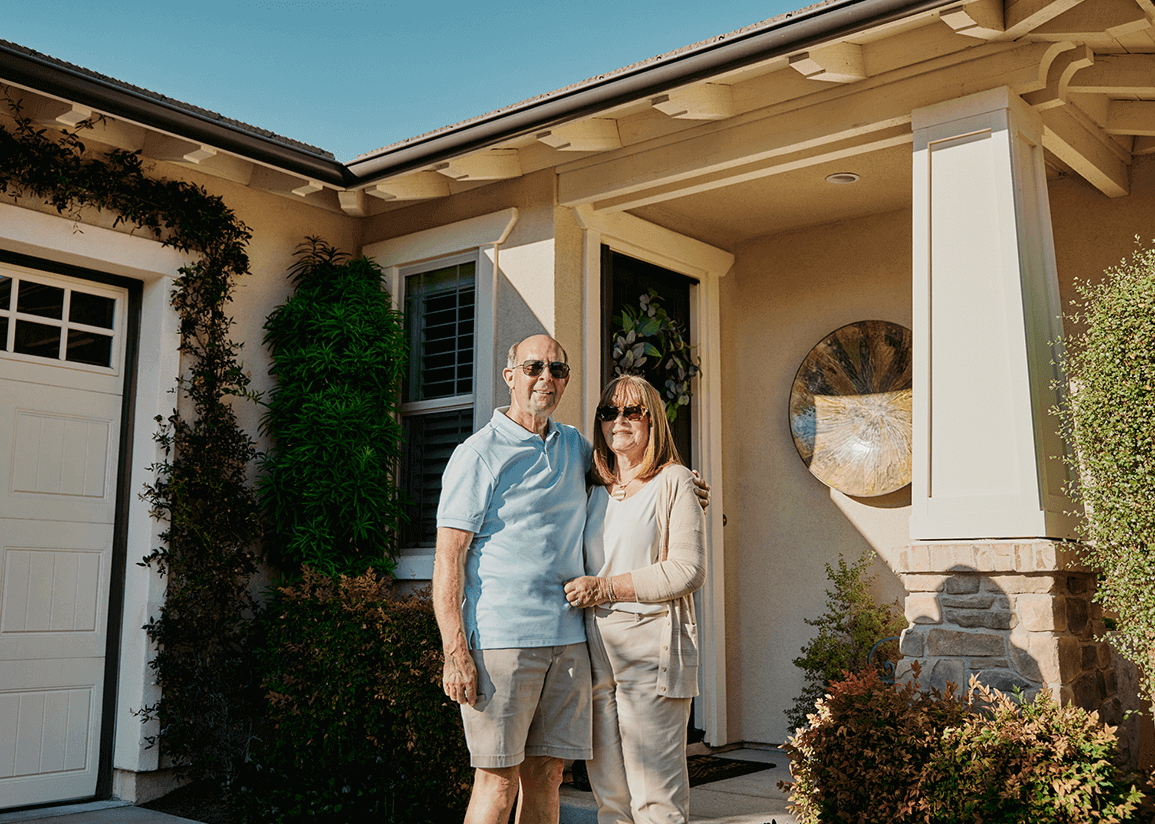

Steven and Denise Rosen in their home in Rancho Mission Viejo, California (top); their 55-plus neighborhood is part of a larger multigenerational community.
A 55-plus neighborhood, with a twist
AGE-RESTRICTED communities have long offered smaller single-family homes or condominiums, with neighborhood amenities like clubhouses, pools, tennis (now pickleball) courts and sometimes golf courses. There are no families with children under these roofs, providing older people with a new sense of community. But in at least one modern community, the families can be nearby. In this experimental idea trend, pockets of 55-plus neighborhoods are being built within a larger, multigenerational development.
Seven years ago, Steven and Denise Rosen left their home of 30 years in Los Angeles to move closer to their children and grandchildren at the nation’s first such development, Rancho Mission Viejo near San Juan Capistrano, California. The Rosens’ 55-plus neighborhood is part of a 6,000-acre housing development that has 4,000 homes so far. When it’s completed in 10 to 15 years, it will encompass 14,000 homes and apartments, 40 percent of which will be dedicated to 55-plus residents. The development also includes a 23,000-acre combination nature reserve and a working ranch that has been in the same family since 1882.
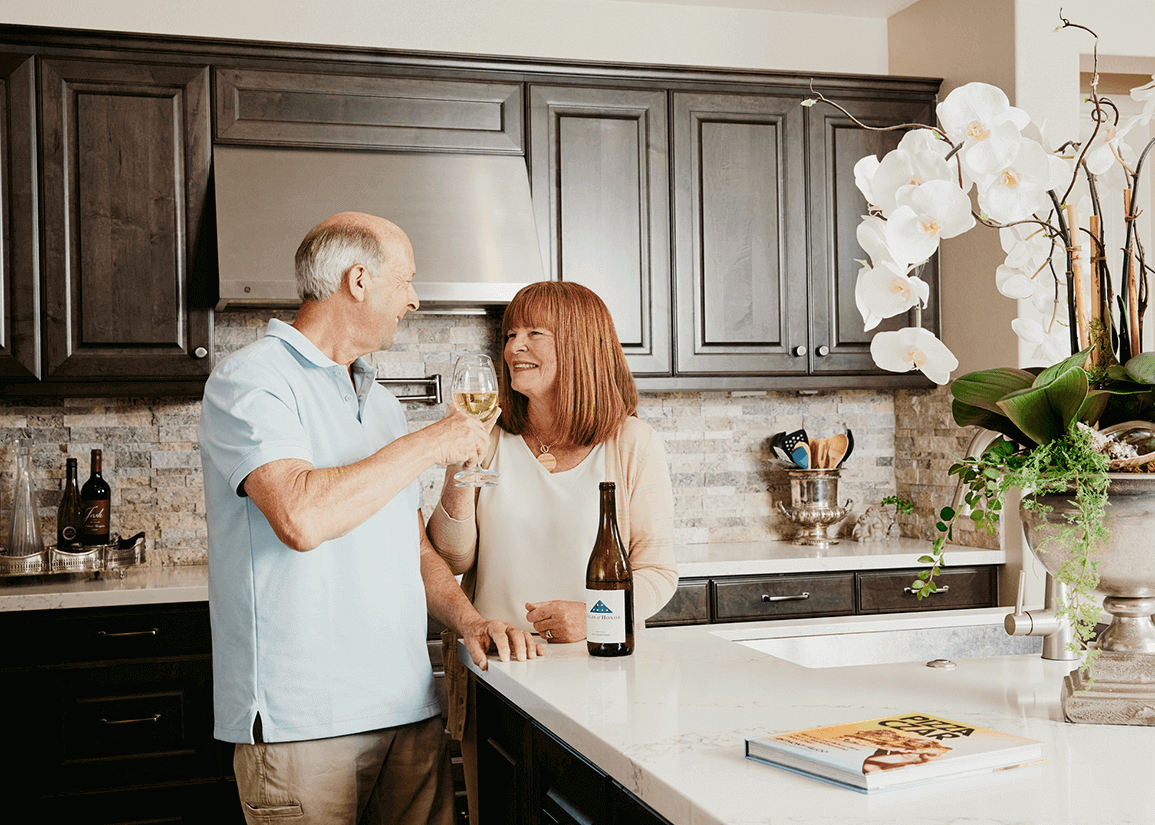
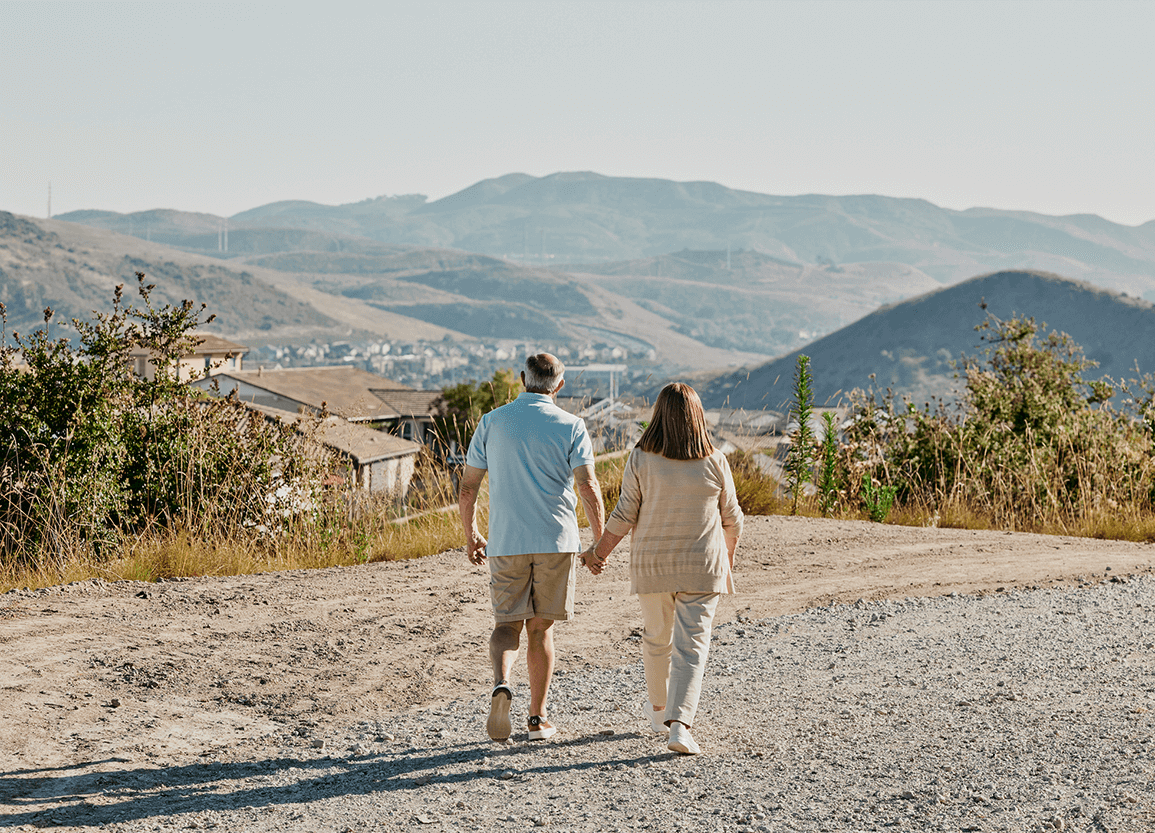
The 55-plus neighborhoods of 150 homes are each scattered throughout the larger community. Residents can have their own pool and activities, but also easily enter the rest of the development and mix with families, says Amaya Genaro, vice president of community services for Rancho Mission Viejo. “You can live in a smaller neighborhood and you’re not worried about basketball being played or kids swerving into the street on their bikes,” Genaro says. “You can swim at your pool. And when your grandkids come, you can go to the all-age pool. It’s the best of both worlds.”
Being near, if not next door to, families with children “gives more texture to the whole community,” says Steven, 78, who is retired from the shoe business. “We were at the Fourth of July party, and all these people and kids were there. It’s like going back to when we were kids. Everyone was having a good time.” Says Denise, 71, a former teacher: “It keeps you young to see young kids and young families.”

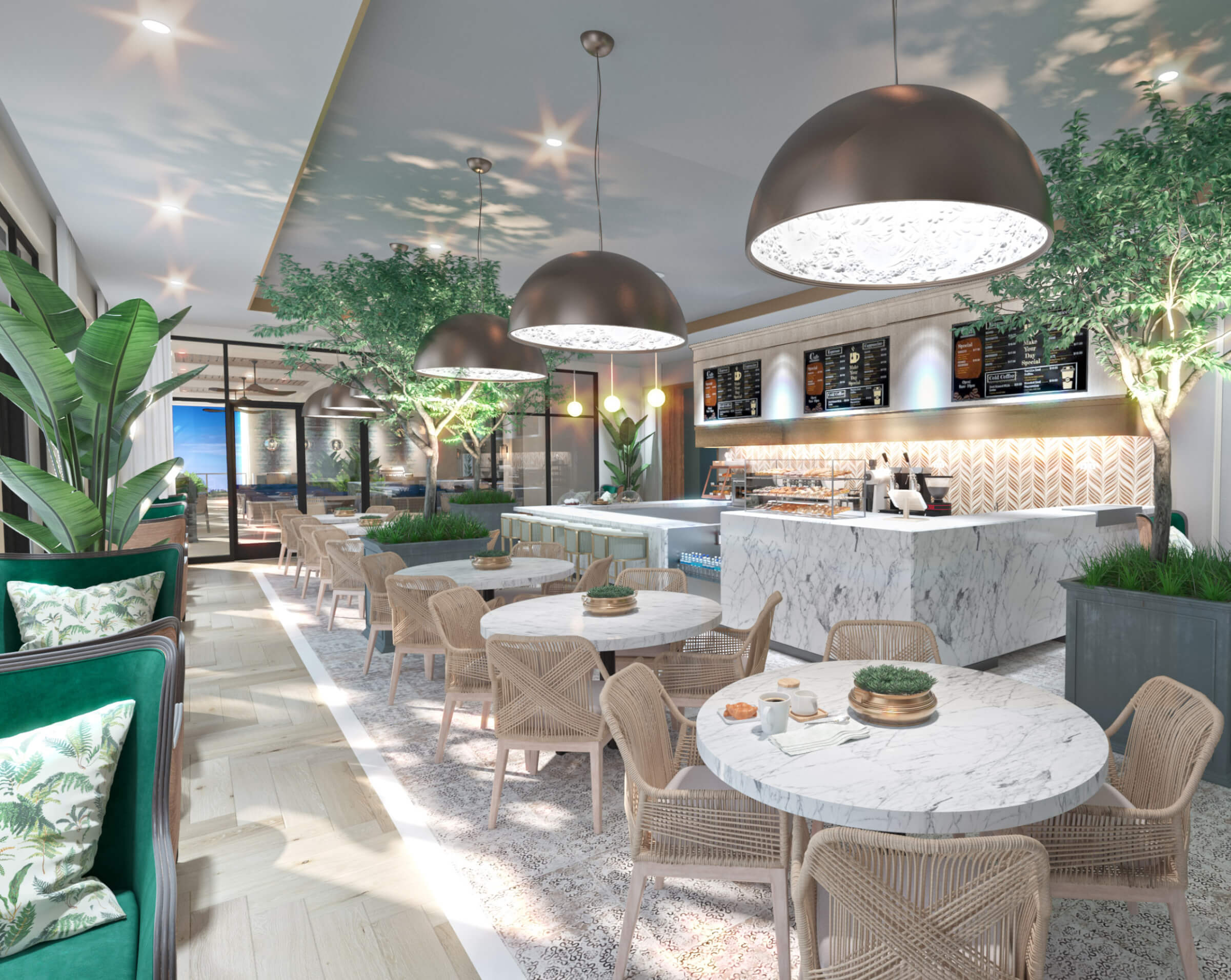
Sally and Bert Russell enjoy the proximity to restaurants and other amenities by living in a multiuse community.
A multiuse community with housing and retail
SALLY RUSSELL and her husband, Bert, were looking at independent-living developments in a few cities including Miami, where they had been living. But “all of it was bingo and so forth and so on,” says Sally, 80. The Russells sought something a little more stimulating. “We are neuropsychologists!”
They eventually settled on Belmont Village Senior Living in Coral Gables, Florida, just outside of Miami. It is part of a trend of multiuse developments that appeal to older people, places that mimic urban neighborhoods with shops, restaurants, libraries and other places of interest just steps away. Many are affiliated with nearby universities, with hospital-sponsored wellness services in the neighborhood. Residents can receive care in their homes as their needs increase, and they don’t have to move to different levels of the facility for assisted living or memory care.
Living in a multiuse community is increasingly appealing to aging boomers who want to stay connected and engaged. Boomers “are a gregarious bunch,” says Patricia Will, founder and CEO of Belmont Village Senior Living, based in Houston, which has multiuse developments in several cities. “This is the generation that lived in dorms, communes, frat houses, sorority houses, served in the Vietnam War or protested,” Will says. “The desire for vibrant social engagement is ever present. It’s one of the reasons why they leave their single-family house in the suburbs. They are driven by not wanting to be alone.”
Multiuse developments are “a modern take on city living,” says David Schless, president and CEO of the American Seniors Housing Association. “These were not communities you would have seen 25 years ago. They are not typical for what we used to see developed.”
The multiuse model is “resonating with both seniors and their adult children,” says Steve Marker, the senior vice president of development for Brightview Senior Living, another developer. Its Brightview West End multiuse development in Rockville, Maryland, is in the middle of Rockville Town Center, the city’s downtown. It includes the county courthouse, a post office, restaurants, hotels, banks and coffee shops, and it is steps to a Washington, D.C., Metro subway station. “We see continued demand as baby boomers really move into retirement in bigger numbers.”
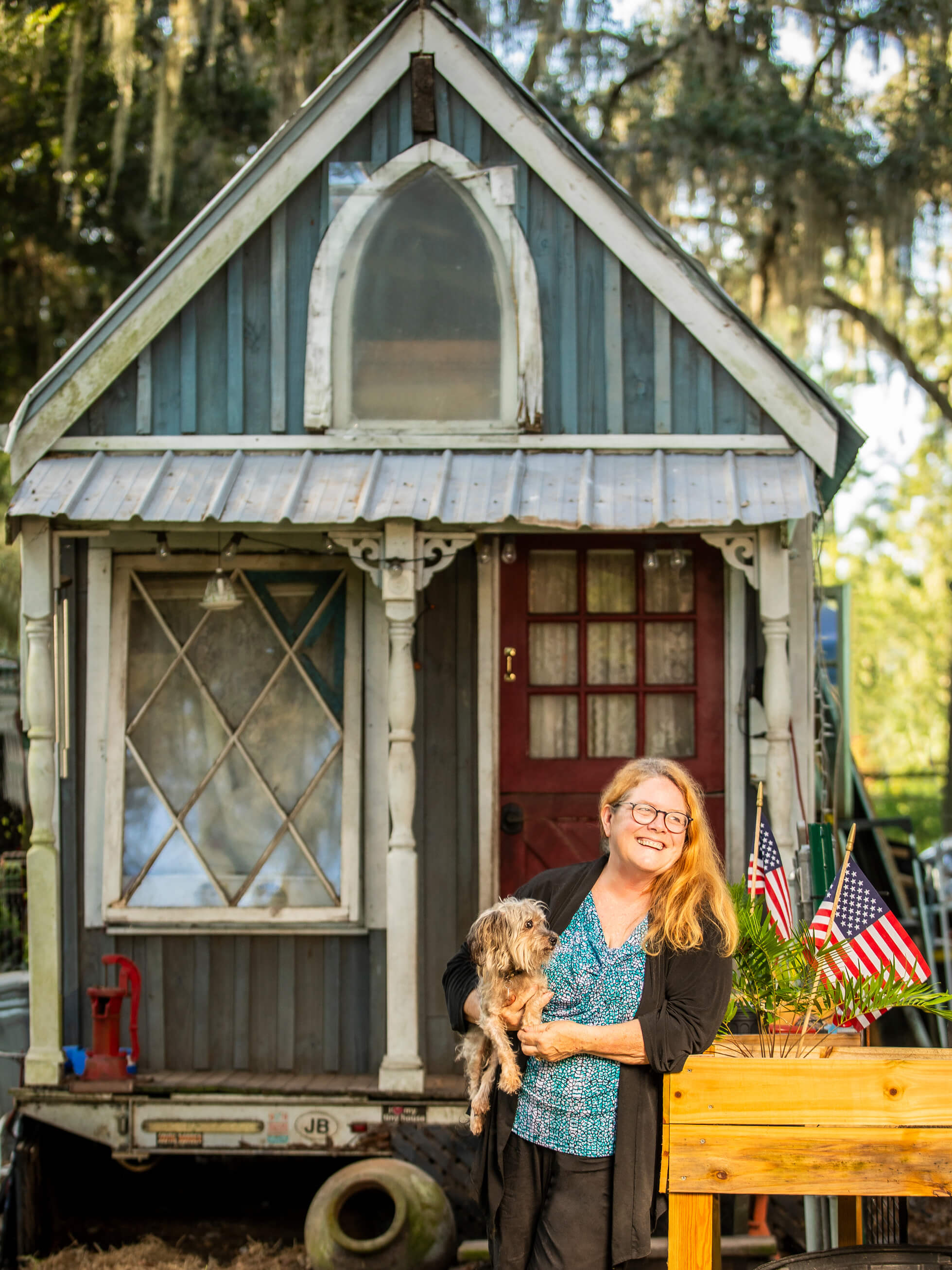

Shorty Robbins’ tiny house measures 125 square feet.
Accessory dwelling units
SHORTY ROBBINS lives in a tiny house. Very tiny. Her home in St. Johns County, Florida, has just 125 square feet.
For years, an even smaller house, only 50 square feet, sat next door. It served as her granddaughter’s bedroom. The two homes sat on a friend’s land, and Robbins spends $500 a month on rent and utilities. Such a low cost of living allows Robbins to travel; a fan of historic reenactments, she goes to events up and down the East Coast and even overseas. “When you live tiny, you can afford to do things like go to Versailles!”
Robbins, 65, who is retired from working in the parks and recreation departments for Jacksonville and St. John’s County, Florida, found that extreme downsizing allowed her to stay in her community. Tiny houses (under 600 square feet) can be mobile with wheels (built on a trailer platform) or stationary. A similar type of structure is the accessory dwelling unit (ADU), which is built on the property of another home, either incorporated into the main house or separate from it. No one keeps track of how many tiny houses and ADUs there are nationwide, but after ADUs became legal in California, the number of permits in the state jumped to 22,663 in 2021, according to the Terner Center for Housing Innovation at the University of California, Berkeley. At least 63,456 ADUs have been built there since 2018. The California Housing Finance Agency created a grant to pay low- to moderate-income homeowners up to $40,000 for preconstruction costs to build ADUs in their backyards as a way to ease the housing crunch there.
“This is 21st-century living,” says Dan Dobrowolski, founder of Escape Homes of Rice Lake, Wisconsin. One of its tiny home developments in Tampa, Florida, sold out quickly, and an expansion to 33 units is almost sold out. “We’re not going to be living in huge McMansions on tiny little lots anymore. That doesn’t resonate with people.”
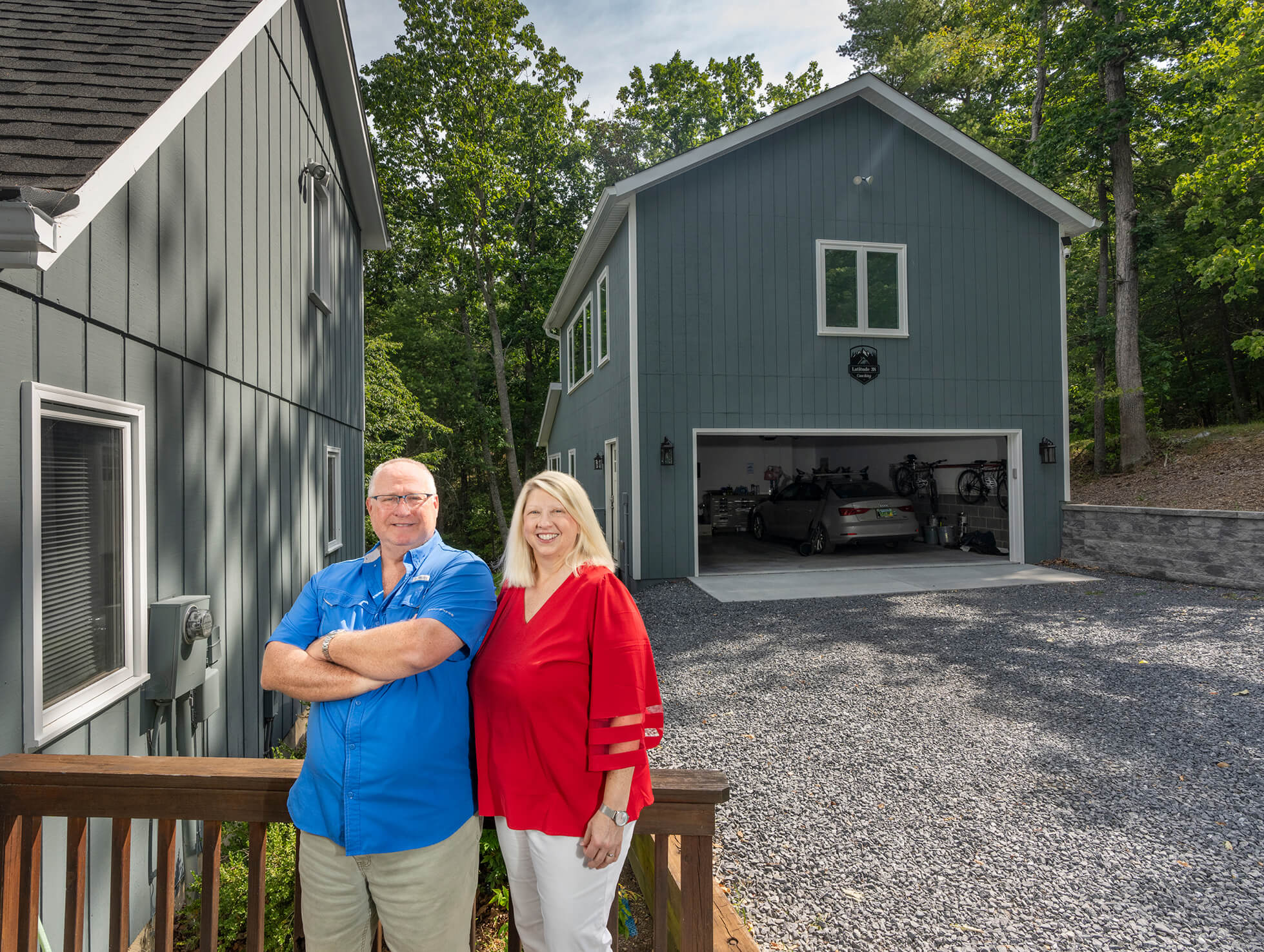

Jim and Ann Davison had a garage with living quarters above it constructed on their property in Virginia.
The typical tiny house or ADU dweller is a 55-year-old woman who is an empty nester, says Daniel Fitzpatrick, president of the Tiny Home Industry Association.
Robbins’ tiny house contains a Murphy bed, made from an old walnut piano, so her residence can sleep three people (one in the loft and two on the foldout bed).
But not all ADUs need to be quite so small. Ann and Jim Davison always knew they’d retire to their vacation house in the mountains of western Virginia. But when COVID hit, they decamped from the suburbs of Washington, D.C., to the mountains full time. In 2022 they built an ADU that has a garage and gym on the first floor and an office, kitchen, bedroom and bath above it. They plan for it to become living quarters for a health care worker when they are older.
The Davisons are making these housing plans as contingencies, not knowing their future caregiving needs or even the future of health care. “We don’t know how difficult it’s going to be to identify a health care employee to live out here with us,” says Ann, 59. “But hopefully we won’t need them for another 15 to 20 years.”

VIDEO: FROM DUSTY GARAGE TO DAZZLING ADU
Watch an episode of the web series Going Tiny With AARP and see how a dusty garage got transformed into a grandmother’s glam living space.
Going Tiny With AARP features people 50 and older who are using tiny homes and Accessory Dwelling Units (ADUs) to help with life’s transitions, improve their quality of life and make closer connections. Watch more episodes at youtube.com/aarp.